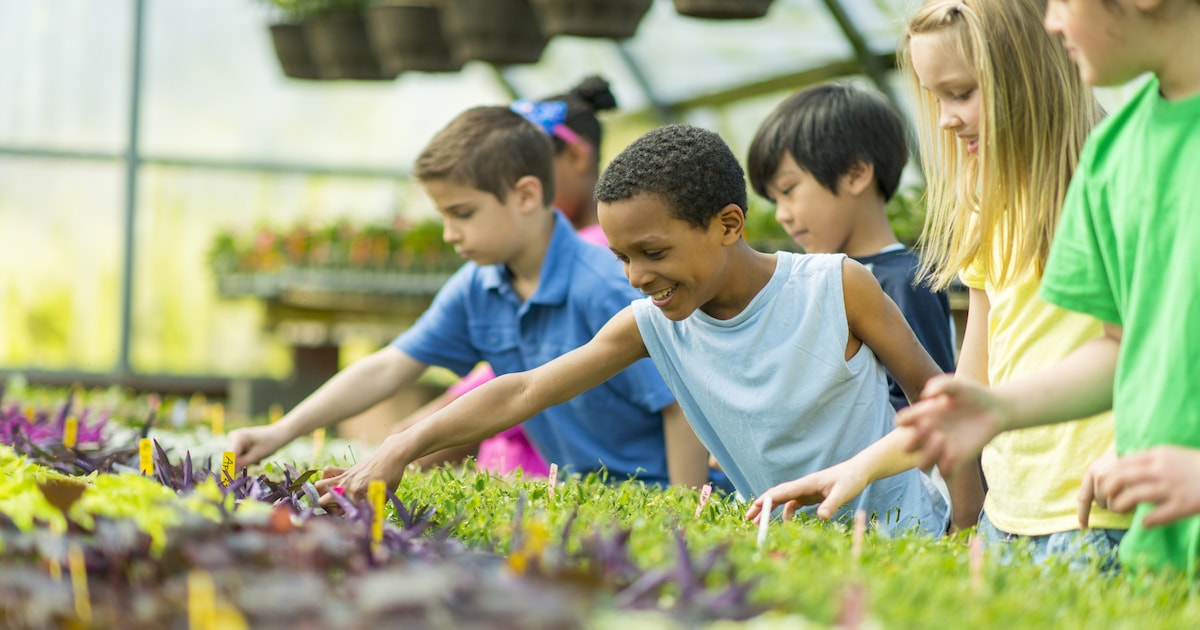
How often do you or your students think about agriculture? Where your food comes from? How it grows? Who grows it? What decisions go into how it is grown?
Maybe you think about it a lot. But maybe your answer is closer to never. Well, if you are a STEAM educator you are missing out because agriculture is hands-on applied STEAM.
The power of teaching agriculture + STEAM
Using the context of agriculture to teach STEAM can be an engaging and powerful tool. Food, plant science, solar power, irrigation, drones – this gold mine of STEAM topics exemplifies project-based learning.
And, as a recent Washington Post article points out, “For decades, observers in agriculture, nutrition and education have griped that many Americans are basically agriculturally illiterate.” That article also outlines a recent study conducted with 4th, 5th, and 6th graders at an urban school in California where researchers found that:
- Over half of them did not know that lettuce and onions are plants.
- 40% did not know that hamburgers are made from cows.
- 30% did not know that cheese is made from milk.
Using agriculture to teach STEAM addresses this knowledge deficit and engages students in projects and activities that use real-world application, critical thinking, creativity, innovation, and collaboration.
So how do you start? What if you know nothing about agriculture? Does seeing cows and shouting “cow!” on a road trip count? Don’t worry. We’ve got you covered!
Resources to get started
The American Farm Bureau Foundation for Agriculture is a nonprofit organization with a mission to educate people about agriculture. We create lesson plans, resources, and games to help connect students to where their food comes from and who grows it. Here are some free tools you can explore:
Purple Plow Challenges (grades 5-8)
These challenges encourage students to research scenarios related to food, hunger, and sustainability. Students build their own prototypes to solve the defined problem. For example, one challenge asked students to look at soil erosion. What could a solution be? Build it, test it, report. To enter for a prize, challenges need to be completed during the cycle; however, all past challenge guides and rubrics are available.
Purple Plow Puzzlers (grades 5-8)
Puzzlers are hands-on activities that can be completed in 1 – 2.5 hours. Puzzlers sharpen critical and creative thinking through agricultural-related activities. They follow the “create, test & improve, and share” steps in the Purple Plow engineering design process. They are aligned to Next Generation Science Standards for 5th – 8th graders and are conducive to a variety of environments.
My American Farm (grades K-5)
Standards-based games, videos, economics and activity sheets all for FREE. Check out THRIVE a game which is focused on sustainability.
Bringing Biotech to Life (grades 7-10)
This unit answers questions like: What is DNA? What is selective breeding? What is biotech? Where would we be without “GMOs”? Engage students in these trending topics that connect to science, technology, engineering, and math, and then when it comes to the final research project, you can infuse it with art (the A in STEAM) by having them create a commercial or ad campaign that synthesizes information learned through visuals that educate the audience while also clearly taking a position on GMO labeling.
National Ag. in the Classroom Organization (K-12)
The National Ag. in the Classroom Organization is another ag. literacy group. They focus on creating lessons and training teachers PreK-12. You can search free online lesson plans that use agriculture as the context for learning. Or look up your own state’s ag. in the classroom organization. Many of them offer free professional development opportunities.
Inspiring examples
Still not convinced? Snack on these ideas!
- At Mid-Pacific Institute in Honolulu, 9th graders learn through a completely project-based curriculum that fulfills requirements for biology, mathematics, social studies, and language arts. Learn about their year-long project centered around sustainability and food security and involved a gardening and a cook-off.
- Teach students about the hidden power of cow manure and how farms like the Bakerview EcoDairy Farm uses it to reduce their ecological footprint and save on electricity.
- Talk sustainability! What does sustainable agriculture mean locally? What does it mean globally?
- Think local! Call a county Farm Bureau near you. See if there is a local farmer who would be willing to video chat with your class!
All of these different areas can open up students’ minds to the possibilities that are out there, and YOU are inviting them to discover.
But that’s not all. The cherry on top?
Careers! There is a whole world of unfilled careers, which is part of the reason we are focusing on STEAM in schools, but STEAM isn’t the only big employer around. Nearly 11% of U.S. jobs are related to agriculture* and that’s pretty sweet.
Receive additional resources by signing up for the Ag. Foundation’s Enewsletter.
** U.S. Dept. of Agriculture: Ag and Food Sectors and the Economy
Julia Recko is the Director of Education Outreach for the American Farm Bureau Foundation for Agriculture. Julia Recko has a master’s degree in secondary education and works in the Ag. Foundation to create accurate and engaging resources for educators and volunteers that introduce students to agricultural themes.
Categorized as: Tips for Teachers and Classroom Resources
Tagged as: Art, Curriculum and Instruction, Engaging Activities, Math and Science, Science, STEAM
